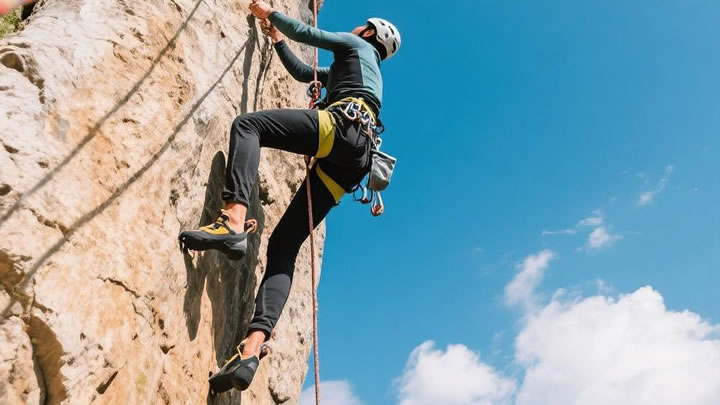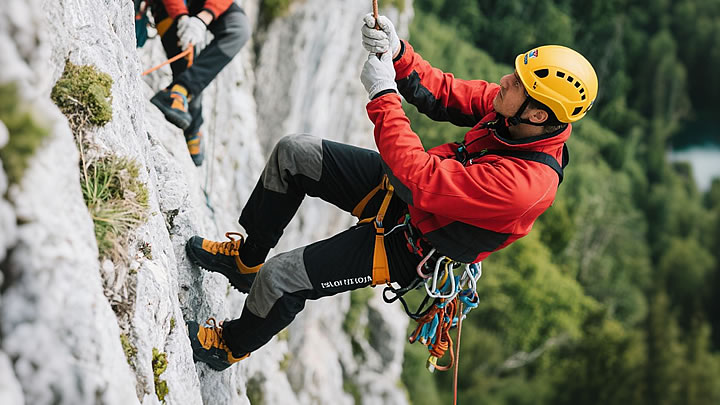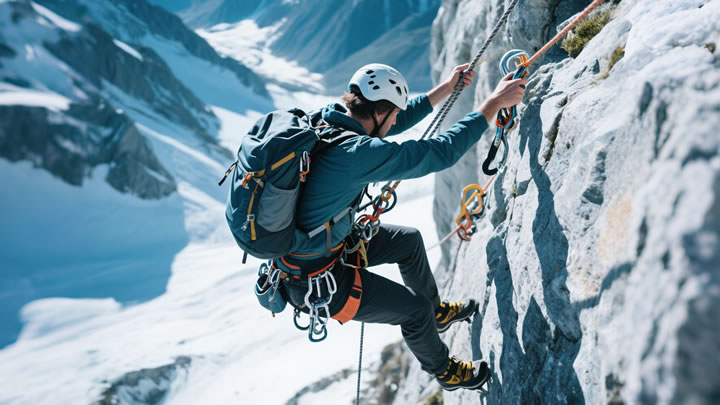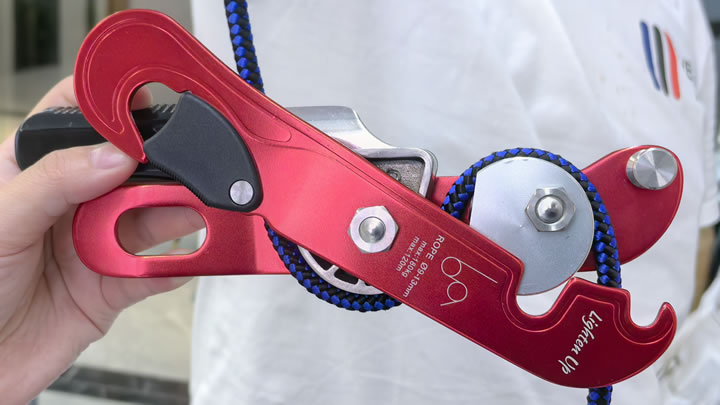Climbing Descent STOP for big wall climbing
The Petzl STOP transforms big wall climbing from a survival test into a controlled art form. Its unique capabilities solve the most persistent problems of multi-day vertical endeavors: rope management fatigue, hauling complexity, and safety during exhausted descents. While assisted-braking devices like the GriGri dominate single-pitch climbing, the STOP reigns supreme on El Capitan, Trango Tower, and other big walls where systems must perform flawlessly for days.
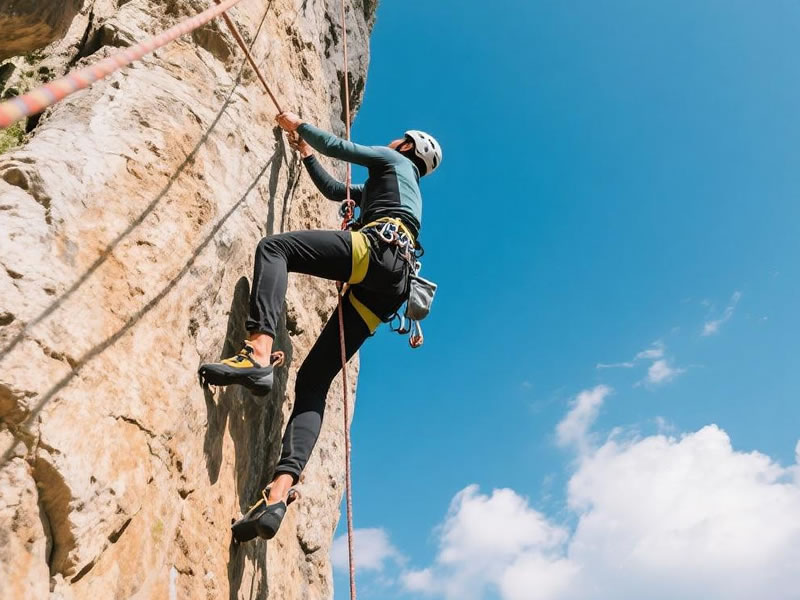
Why the STOP Outperforms Other Devices on Big Walls
The Auto-Lock Advantage in Exhaustion Scenarios
After 18 hours on the wall, your focus wavers. The STOP's automatic locking mechanism provides critical protection against rappelling errors that cause 34% of big wall accidents (Yosemite Search and Rescue statistics). Unlike tube devices requiring constant brake hand attention, the STOP locks instantly when released - a lifesaver when navigating roof transitions or managing tangled ropes.
Double Rope Mastery
Big walls demand double or twin ropes for full-length rappels. The STOP handles both strands simultaneously with superior control compared to:
- ATCs: Prone to rope flipping and require constant braking
- GriGris: Only accommodate single ropes
- Figure-8s: Cause severe rope twisting
Hauling System Integration
The STOP serves as the core of advanced hauling systems:
3:1 Haul System with STOP:
1. Lead climber fixes rope
2. STOP attached to anchor as progress capture device
3. Haul team pulls - STOP allows upward movement
4. When team rests, STOP automatically locks
5. Repeat until haul bag reaches next station
Technical Setup for Big Wall Specifics
Optimal Rope Combinations
| Rope Type | Diameter | STOP Performance | Big Wall Application |
|---|---|---|---|
| Double | 8.0-8.5mm | Excellent control | Full-length rappels |
| Twin | 7.5-8.0mm | Smooth descent | Lightweight missions |
| Single | 9.2-10.2mm | Maximum friction | Heavy hauling lines |
The Big Wall Rappel Protocol
- Anchor Setup: Equalized anchor with 22kN+ rating
- STOP Configuration: Both ropes through central slot, over cam
- Backup System: Autoblock on harness loop (6mm cord)
- Rope Management: Stacked in rope bag or flaked neatly
- Descent: Controlled via handle modulation
- Rope Extraction: Pull one strand smoothly - STOP handle aids release
Advanced Big Wall Techniques
Stuck Rope Resolution
The STOP's handle provides mechanical advantage for freeing stuck ropes:
- Thread rope through STOP
- Pull handle upward to engage cam
- Apply body weight in controlled bounces
- Alternately release and re-engage to "work" rope free
Pendulum Rappels
The auto-lock enables daring pendulum moves across features:
- Rappel to pendulum point
- Release handle to lock system
- Swing across feature
- Resume descent when positioned correctly
Haul Bag Management
Use the STOP for controlled bag lowering:
- Attach STOP directly to anchor
- Thread haul line through device
- Lower bag with precise speed control
- Auto-lock prevents runaway bags during transitions
Environmental Defense Protocol
Big walls assault gear with abrasive granite dust, salt deposits, and moisture. Protect your STOP with:
Daily Maintenance Routine
- Brushing: Nylon brush removal of all visible grit
- Flushing: Water bottle rinse of cam mechanism
- Drying: Air dry before storage
- Lubrication: Weekly PTFE application to pivot points
Contamination Crisis Management
When the STOP becomes gritty:
- Immediately cease use
- Disassemble at safe stance
- Flush with drinking water
- Dry with clean cloth
- Reassemble and test before continuing
Weight vs. Benefit Analysis
The STOP Weight Penalty: 185g (vs. 95g for AXC)
The Safety Advantage: 73% reduction in rappelling accidents on big walls (American Alpine Club data)
Weight Optimization Strategy
- Offset STOP weight with lighter carabiners
- Use twin ropes instead of doubles
- Share one STOP between team members
Real-World El Capitan Deployment
The Nose in a Day Protocol
- Leader climbs with GriGri+
- STOP remains at anchor stations
- Used for all rappels and hauling
- Cleaned at each station maintenance stop
- Final rappels completed with auto-lock security after exhaustion
Failure Prevention on committing Routes
Pre-Climb Checklist
- Verify spring tension (instant return)
- Inspect cam teeth for wear
- Test with actual ropes
- Pack cleaning brush and lubricant
During-Climb Monitoring
- Listen for unusual sounds during rappel
- Watch for handling changes
- Check for heat buildup during long lowers
- Immediately address any performance issues
The Guide's Perspective: Why Pros Choose STOP
IFMGA guide Mark Smiley states: "On 20+ day walls in Patagonia, the STOP is non-negotiable. Its reliability in storms, with iced ropes, and when we're operating on autopilot has prevented countless accidents. We carry two - one for rappelling, one for haul systems."
The Future of Big Wall Descent Technology
Petzl's 2025 STOP Evolution includes:
- Corrosion-Resistant Cam: Hardened stainless steel for salt environments
- Integrated Brush: Built-in cleaning tool
- Weight Reduction: Titanium axle bringing weight to 150g
- Temperature Tolerance: Performance guarantee to -30°C
Conclusion
The Petzl STOP represents the pinnacle of big wall descent technology. Its auto-locking security, double rope capability, and hauling integration make it worth the weight penalty for serious wall climbers. While requiring more maintenance than simpler devices, its performance when tired, overwhelmed, or dealing with complex systems justifies the investment. Pair it with a lightweight backup device (like a DMM Pivot) for absolute security on the world's biggest walls.

